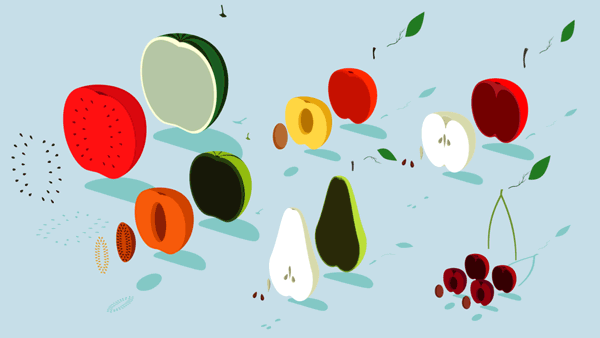Unless you’ve been living under a rock this year, you probably heard that California is in a drought. And not just any drought, the worst drought in over 1,200 years, according to tree ring data.

gif courtesy of giphy.com
And if you also didn’t know, California grows a lot of our food. According to the California Department of Food and Agriculture, almost half of the fruits, vegetables, and nuts grown in the U.S. are from the golden state.
In the USDA’s 2013 California Agricultural Statistics Report, California is listed as the sole U.S. producer (meaning 99% of that crop is grown in CA) of plums, peaches, almonds, grapes, pomegranates, kiwi, and figs.
In the same report, California is also listed as “leading the nation” in the production of trendy-as-hell foods like avocados, raspberries, kale, brussels sprouts, and garlic. Think of what the world would be like without garlic bread!

gif courtesy of giphy.com
For farmers in California, water is starting to become extremely scarce and expensive. In May, the New York Times reported that CA farmers agreed to state-proposed water cuts and as a result they’ve needed to cut their water usage by at least 25%. While that doesn’t kill the plants, it does produce some unsatisfactory results: smaller fruits and vegetables.
Many farmers are finding out the hard way that people don’t want to buy smaller produce. If people continue to buy bigger, foreign fruits and vegetables, farmers’ businesses will be in even more jeopardy.
However, those shoppers being size queens about their fruits and veggies are making a huge mistake. Why? Smaller fruit actually tastes better.

gif courtesy of giphy.com
While a smaller apple might not be as pretty on Instagram, it’s going to have twice the amount of flavor as a bigger apple. Throughout this drought, farmers (and TIME magazine) have reported that their produce has tasted better than ever.

gif courtesy of giphy.com
The science behind it is pretty simple. With less water going into the plants, less water is going into fruits and vegetables. While this makes the produce smaller and less juicy, it prevents dilution of flavor, making that smaller slice of watermelon sweeter and fruitier than its more hydrated cousin.
Other fruits that will be packed with a flavor punch this year (and yes, these are all actually fruits) include cucumbers, tomatoes, melons, peaches and grapes.

gif courtesy of giphy.com
According to Irwin Goldman, a horticulture professor at the University of Wisconsin-Madison, since the drought has also brought hot weather, certain compounds in produce will be produced in higher quantities. One example is chili peppers, which will have a higher level of the alkaloid capsaicin, which creates the spicy flavor on our tongues.
Look out for beets, onions and garlic which will also have stronger flavors due to the heat.

gif courtesy of giphy.com
The last fruity byproduct of the drought is sweeter fruit, with peaches being the main example of this phenomenon. When there’s more sunlight creating higher rates of photosynthesis in the peach (aka more sugar) but hotter temperatures at night stunting the peaches’ growth, smaller but much sweeter fruits are the result.
While farmers have been pleased that their products are extra tasty, they are still worried that this drought might be the end of their farms as less people find their products appealing. If only people knew buying bigger fruits and vegetables was shortchanging them flavor.

gif courtesy of giphy.com
So the next time you are in the supermarket or hitting up your local fruit stand, help out California’s farmers (and your tastebuds) and buy yourself a tiny but delicious treat.

gif courtesy of giphy.com

